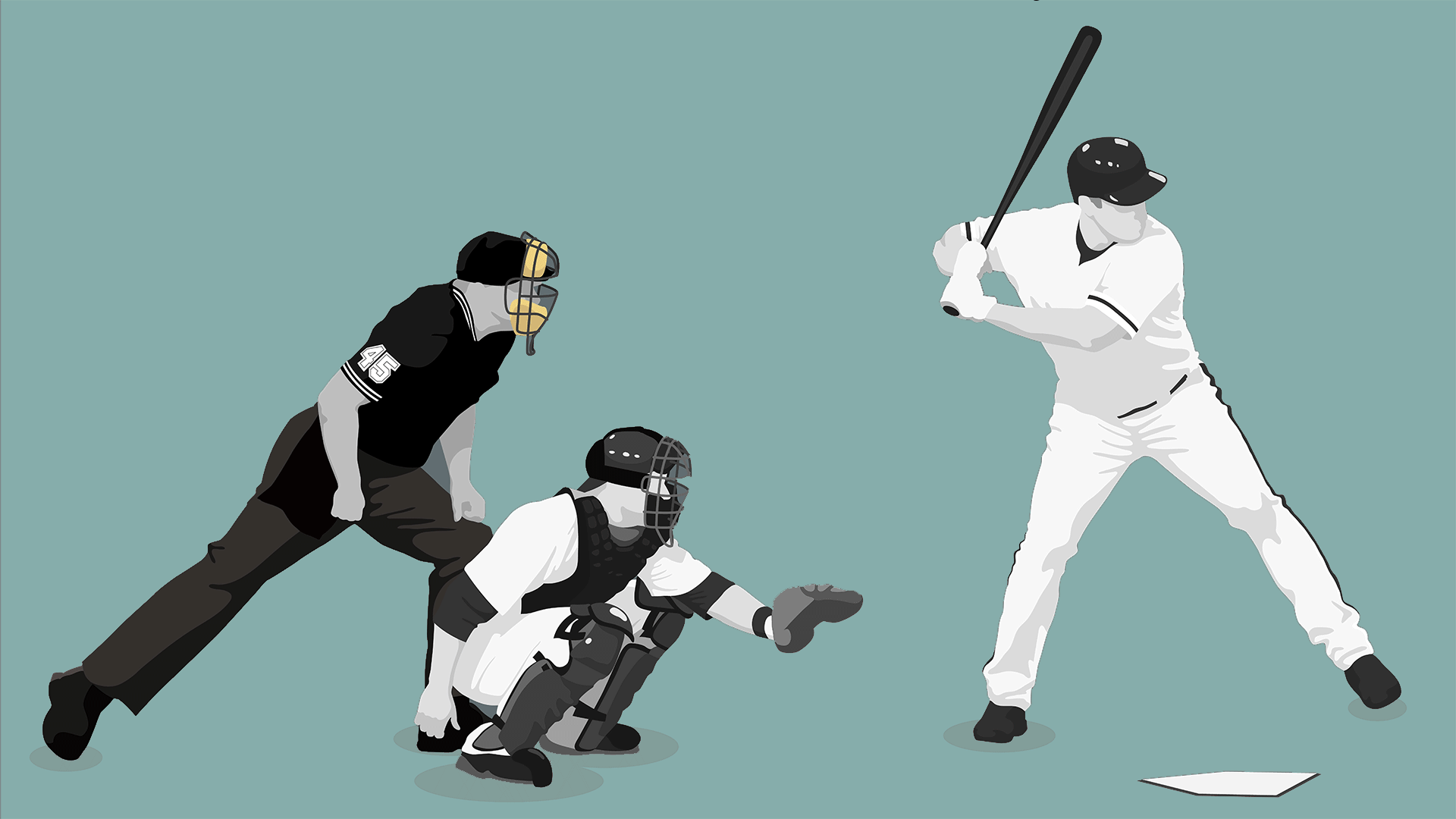- July 12, 2021
- By Annie Krakower
If you’ve ever watched a baseball umpire whiff on a call and wondered “Is this guy even paying attention?!,” new research led by a University of Maryland expert suggests you might be on to something.
Just as pitchers might run out of gas, umps tend to use up available attention throughout the nine innings, allocating more as the stakes get higher, according to a working paper from Assistant Professor James Archsmith in the Department of Agricultural and Resource Economics. Along with co-authors Anthony Heyes of the University of Ottawa and Matthew J. Neidell and Bhaven N. Sampat of Columbia University, he analyzed millions of decisions made by home-plate umpires in more than 26,000 Major League Baseball games to determine how effort exerted on earlier ball or strike calls impacted later ones.
And while that might help enraged fans understand the occasional botched call at the plate, the idea of an interdependent budget of attention could be launched out of the ballpark and applied to other decision-making situations—from the intricacies of the stock market to choosing what shirt to wear in the morning.
“The really nice thing about the MLB setting is we precisely observe whether or not these umpires are making mistakes, and we use that as the proxy for attention,” Archsmith said. “The dynamic part is the most exciting part, because there have been a lot of settings in labs where they actually measure how well people pay attention, but they’re only looking at one moment in time.”
The research team got the idea following an 18-inning World Series game between the Boston Red Sox and Los Angeles Dodgers in 2018, which sparked an interest in how fatigue affects performance. Archsmith, who had previously used MLB data to study how air pollution could diminish umpires’ accuracy, suggested delving into the stats again.
Using PITCHf/x, technology installed in every MLB stadium that objectively illustrates whether a pitch is a ball or strike, they examined games from 2008-18, assuming that, all else equal, the likelihood of a correct call increases as umpires apply more attention. They found that effort spent on earlier decisions correlated with more incorrect calls later, establishing attention as a depletable resource.
They also considered the varying importance of an ump’s decisions—think first inning, nobody on, vs. bottom of the ninth, bases loaded. They defined this as “leverage”: the change in probability that the batting team wins, taking into account factors like the positions of baserunners, the score and how much time remained in the game. Results showed improved accuracy—enough to temporarily bump a median umpire’s call accuracy to the 73rd percentile—amid one standard-deviation increase in leverage, suggesting umps pay more attention as the stakes get higher. Even anticipating such leverage in the future, measured through game simulation, worsened current performance, knocking umps down to the 39th percentile.
“It’s the exact same analogue of physical effort,” Archsmith said. “If you anticipate that you’re going to need a lot of effort later, you’re going to hold back a little bit right now.”
But the research team found that even short rest periods appear to help—a fitting point as this week’s MLB All-Star Break pauses the regular-game schedule. The data indicates that the few minutes between innings reset the process, allowing for “replenishment of cognitive capital.” That idea, along with the finding that people expecting to exert more effort later might be withholding it now, has wide-reaching implications, Archsmith said.
“I think (those) are two things that you might think about when you’re designing workplaces, when you’re designing workflows,” he said, “just to make sure that people have ample time to refresh their brain every now and then.”
